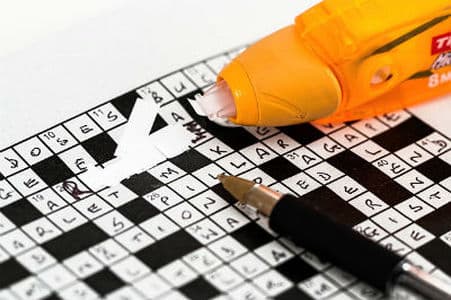Mistakes People Make – No. 4 >>> reprinted from DATIA focus magazine
By Joe Reilly, Joe Reilly & Associates, Inc.
… Click Here for a PDF copy of the article.
This is the fourth of a series of articles that will highlight actual mistakes that occur during the process of workplace drug & alcohol testing. The intent of these articles is to alert folks as to the importance of taking the time to perform drug and alcohol testing services correctly and without flaws. Of course proper training and consistent re-training is the key to preventing the mistakes that are discussed.
Back in 1997 media accounts indicated that some collection sites performing Department of Transportation (DOT) drug test collections were not adhering to the proper DOT collection protocols. The U.S. Government Accountability Office (GAO) was asked to perform an undercover operation to determine whether (l) urine collectors followed DOT protocols at selected collection sites and (2) commercially available products could be used to defeat drug tests. Twenty-two of the twenty-four selected urine collection sites did not adequately follow the DOT collection protocols. Additionally, it was found that cheating was in fact very possible at the majority of these sites.
As a result of the media exposure and GAO findings in 1997, DOT asked the industry to pay more attention to the training requirements and protocols for drug test collections. With a major emphasis on the prevention of cheating on the drug test; DOT produced training tools for the industry—a poster and a video entitled “DOT’s 10 Steps to Collection Site Security and Integrity” both available on the web site of the Office of Drug & Alcohol Policy & Compliance (ODAPC)—www.dot.gov/odapc/
Four years later, mistakes continue to occur in the collection process. Millions of drug test collections are performed each year; many by well trained collectors without error. But many are also performed by collectors who have not kept up with required DOT training for DOT urine drug test collections.
Recently, DOT again emphasized that many collectors and collection sites continue to make mistakes and errors during the collection process. Here is a listing of some of the recent errors pointed out by DOT officials with DATIA’s suggestions on how to avoid these errors:
Custody and Control Forms (CCFs) received are illegible. Collectors should review all copies of the CCF prior to distributing them to ensure that they are legible. In regards to copies that are to be faxed, if the writing is light then collectors should make a darker copy to be sent via fax.
MROs and Employers are reporting that they are not receiving their respective copies of the CCFs despite multiple requests. Per DOT regulations, collectors must send the CCFs within 24 hours or the next business day and must keep their copies of CCFs for at least 30 days.
Collectors are not marking step ID in the CCF to indicate the transportation mode that the collection is for (FAA, FRA, FTA, FMCSA, etc.). This is a new step for the CCF and collection sites should be sure to post notices within the collection area reminding collectors to mark this information on the CCF.
The donor initialing of the specimen bottle labels is being done while the labels are on the CCF contrary to DOT regulations that require the labels be signed on the specimen bottle.
Collectors are not adequately informing donors that leaving the collection site prior to the completion of the collection process (with the exception of pre-employment tests where the collection process has not begun) is considered a refusal to test
The Drug & Alcohol Testing Industry Association (DATIA) has listed the above DOT concerns on the DATIA web site (datia.org) along with best practices that can be used to ensure compliance with applicable DOT regulations. Now is a good time for collection companies to hold a meeting with all collectors in the organization to go over these mistakes that DOT is regularly seeing.
Collectors and collection facilities should make sure all collectors keep up with the required DOT training and DOT updates. As a reminder, a new Federal Custody & Control Form (CCF) was created with the revisions made to the Mandatory Guidelines for Federal Workplace Drug Testing Programs effective October 1,2010. DOT extended the use of the older Federal CCF s to 11-30-2011; effective as of 12-01-2011 the use of the new CCF form was required.
Employers should be monitoring the collection facilities or collectors that they hire to make sure they are performing collections correctly and not making the errors noted above. It is an employer’s responsibility to make sure that the process is in compliance. Ask your collectors about their training and about their procedures. Many collectors have not received the five-year refresher training required by DOT and many have done collections that resulted in fatal flaws and not completed the required error correction training and proficiency demonstration. Employers and their Designated Employer Representatives need to be proactive in monitoring the work performed by the service agents in the DOT drug-testing program.
When mistakes occur, the outcome may be a second collection, an annoyed client, an annoyed donor, an issue with the DOT or an issue in a lawsuit. Avoid all of these issues, do it right the first time—the key is training and refresher training and keeping up to date with the regulations. Look to DATIA for a great resource for regulatory updates, training and promotion of the highest possible standards for the industry.
Best Practices to Avoid these Mistakes:
Collectors should review all copies of the CCF prior to distributing them to ensure that they are legible. In regards to copies that are to be faxed, If the writing Is light then collectors should make a darker copy to be sent via fax.
Always fax MRO and Employer copies Immediately after collection or no later than the end of the business day.
When faxing copies of CCFs, maintain a copy of the fax transmittal form with the CCF.
Post a notice in the collection site regarding the new step 1D on the CCF to indicate the transportation mode that the collection is for.
Post a notice that specimen bottle labels not to be dated or initialed until the labels are on the bottles.
Use remarks line to indicate donors are informed of consequences of leaving the collection site (a refusal). DOT’s 10 Steps to Collection Site Security and Integrity:
Pay careful attention to employees throughout the collection process.
Ensure that there is no unauthorized access into the collection areas and that undetected access (e.g., through a door not in view) is not possible.
Make sure that employees show proper picture 10.
Make sure employees empty pockets; remove outer garments (e.g., coveralls, jacket, coat, hat); leave briefcases, purses, and bags behind; and wash their hands.
Maintain personal control of the specimen and CCF at all times during the collection.
Secure any water sources or otherwise make them unavailable to employees (e.g., turn off water inlet, tape handles to prevent opening faucets, secure tank lids),
Ensure that the water in the toilet and tank (if applicable) has bluing (coloring) agent in it. Tape or otherwise secure shut any movable toilet tank top, or put bluing in the tank,
Ensure that no soap, disinfectants, cleaning agents, or other possible adulterants are present.
Inspect the site to ensure that no foreign or unauthorized substances are present.
Secure areas and items (e.g., ledges, trash receptacles, paper towel holders, under-sink areas, ceiling tiles) that appear suitable for concealing contaminants.Joe Reilly entered the world of drug testing in 1993, he is well known throughout the industry and considered an expert on workplace drug testing issues. Joe served for nine years on the DATIA Board of Directors and served as Chairman of the Board from 2004-2008. Joe is currently a Regional Certified Professional Collector Trainer (RCPCT) for DATIA and is available for DATIA CPC training in all areas of Florida. He is also active with consulting projects, succession planning, and assisting buyers and sellers in the drug testing industry work through the merger and/or acquisition process.

